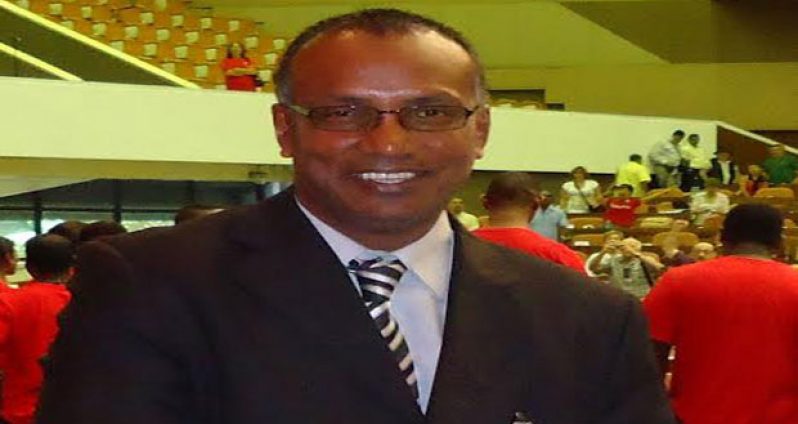IN recognition of the release of the last three members of the Cuban Five on December 17, 2014 and the new era of relations between Washington and Havana, the Guyana-Cuba Solidarity Movement (GCSM) will be joining the International Committees to redouble their efforts to change American policy to allow Cubans to choose their own economic and political destiny.This is according to President of the GCSM, Haleem Khan who said, “The International Committee is organising a Tuitazo! A tuitazo (pronounced “Twee-ta-zoe”) is an ongoing series of mass tweets around an event or issue. We’ll be using the hashtag #D17CubaVa for our tuitazo, which will begin with tweets on December 4 to mark the day Gerardo Hernandez was moved from the maximum security prison at Victorville, California, to a prisoner transfer centre in Oklahoma, the first small step in his journey home to Havana.”
Khan explained that on the days leading up to the release of the last three members of the Cuban Five (Gerardo, Ramon and Tony), tweets will be sent out to mark key moments in the progress of that journey, as well as their arrival in Havana and the national celebrations that followed.
Each tweet will link back to more information — text, images, videos — about the event and its context.
He explained that some of the tweeted issues will be that “On December 16, for example, one day before Antonio, Ramon and Gerardo landed in Havana, the United States government fined the German Commerzbank $1 billion simply for doing business with Cuba in violation of its blockade.”
On December 24, one week after their return and the Obama promise of a new era of relations between Washington and Havana, the U.S. State Department announced it would spend another US$11 million on regime-change programmes aimed at Cuba.
“And on December 17, 2014, the last three members of the ‘Cuban Five’ returned home to their country and to their families after 16 long years in American prisons.
High hope
Their triumphant, historic homecoming was coupled with the hope that the United States would finally normalise relations with Cuba after more than 50 years of hostility. That hope has not been realised.
“However the two countries re-opened their respective embassies in 2015 and the U.S. State Department ended its designation of Cuba as a “state sponsor of terrorism.”
However, the GCSM President noted that the 54-year-old U.S. blockade of Cuba not only remains in place, but the United States government has also continued to vote against United Nations resolutions calling for its end.
And the United States continues to refuse to return the Guantanamo Bay naval base to its rightful owners, or halt regime-change programmes intended to overthrow Cuba’s legitimate government.
The Cuban Five, also known as the Miami Five (Gerardo Hernández, Antonio Guerrero, Ramón Labañino, Fernando González, and René González) are five Cuban intelligence officers who were arrested in September 1998 and later convicted in Miami of conspiracy to commit espionage, conspiracy to commit murder, acting as an agent of a foreign government, and other illegal activities in the United States.
René González was put on parole for three years starting 2011. He was allowed to return to Cuba for his father’s funeral on April 22, 2013. Fernando González was released on February 27, 2014.
He returned to Cuba and campaigned for the release of the remaining three. In December 2014, the last three prisoners were released as part of a prisoner swap for an unnamed American intelligence agent held by Cuba. American Alan Phillip Gross was released by Cuba at the same time.
GCSM seeks to help Cuba’s overdue development
SHARE THIS ARTICLE :
Facebook
Twitter
WhatsApp



.jpg)









